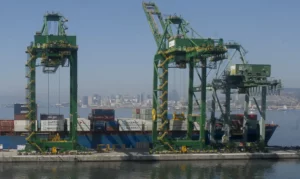In March, Brazil experienced a notable 30.4% reduction in its trade surplus from February, landing at $7.48 billion.
A 14.8% decrease in exports, totaling $27.98 billion, and a 7.1% drop in imports to $20.50 billion contributed to this downturn.
The quarter ended with a $19.08 billion surplus, a 22.2% year-over-year increase. Exports grew by 3.2%, reaching $78.27 billion, while imports fell slightly by 1.8% to $59.19 billion.
Agricultural exports decreased by 20.8% to $7.14 billion. The extractive industry saw a more pronounced fall of 23.9%, summing up to $6.42 billion.

Manufacturing exports also declined by 6.2%, standing at $14.24 billion.
The agricultural sector was hit by significant sales drops in unprocessed rice (-99.9%), unground corn (-72.5%), and soybeans (-26.7%).
In the extractive industry, declines were marked in raw minerals (-54.0%), copper ores (-27.4%), and crude oil (-35.5%).
The manufacturing sector faced reductions in poultry meat and offal (-23.6%), soy meal and other animal feed (-23.8%), and iron-related exports (-36.6%).
However, Brazil boosted its exports to the United States by 21.3%, reaching $3.76 billion.
Exports to Argentina, China, Hong Kong, Macau, and the European Union saw decreases of 27.9%, 23.4%, and 31.6%, respectively.
This summary highlights Brazil’s trade performance in March, focusing on the key sectors and global trade partnerships affected during the period.

